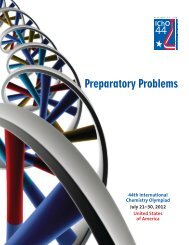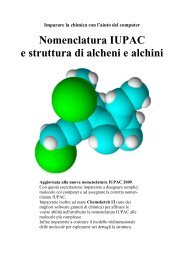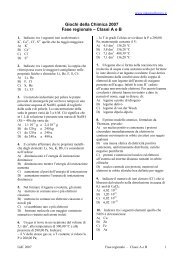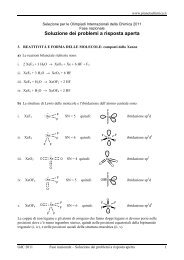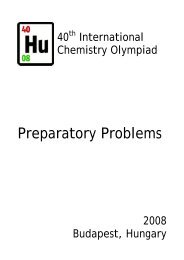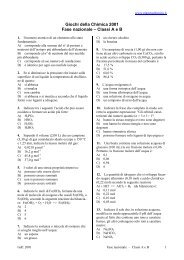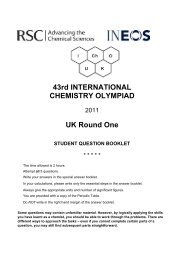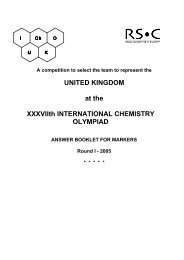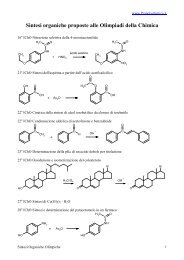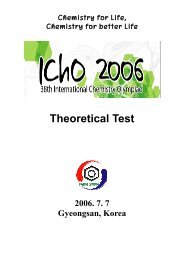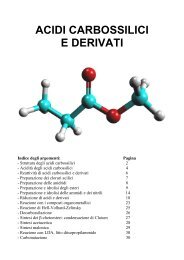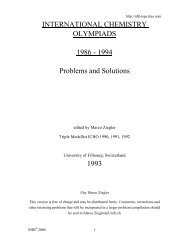International Chemistry Olympiad - Appendix C ... - PianetaChimica
International Chemistry Olympiad - Appendix C ... - PianetaChimica
International Chemistry Olympiad - Appendix C ... - PianetaChimica
You also want an ePaper? Increase the reach of your titles
YUMPU automatically turns print PDFs into web optimized ePapers that Google loves.
6.3.4.4. Hard and soft Lewis acids and bases 36.3.5. Phase6.3.5.1. Temperature dependence of vapour pressure 36.3.5.2. Clausius-Clapeyron equation 36.3.5.3. Single component phase diagramsa. triple point 3b. critical point 36.3.5.4. liquid-vapour systema. ideal and nonideal systems 3b. diagram 3c. use in fractional distillation 36.3.5.5. Henry’s Law 36.3.5.6. Raoult’s Law 36.3.5.7. Deviation from Raoult’s Law 36.3.5.8. Boiling point elevation 36.3.5.9. Freezing point depression 36.3.5.10. Osmotic pressure 36.3.5.11. Partition coefficient 36.3.5.12. Solvent extraction 36.3.6. Multiple6.3.6.1. Calculation of pH for multiprotic acids 36.3.6.2. Calculation of pH for weak acid mixtures 36.4. Electrochemistry6.4.1. Electromotive force (definition) 16.4.2. First kind electrodes 16.4.3. Standard electrode potential 16.4.4. Nernst equation 36.4.5. Second kind electrodes 36.4.6. Relationship between ∆G and electromotive force 37. Chemical kinetics (Homogeneous reactions)7.1. Introduction7.1.1. Factors affecting reaction rate 17.1.2. Reaction coordinates and the basic idea of a transition state 17.2. Rate law7.2.1. Differential rate law 27.2.2. Concept of reaction order 27.2.3. Rate constant definition 27.2.4. First order reactions7.2.4.1. Dependence of concentration on time 37.2.4.2. Concept of half life 37.2.4.3. Relationship between half life and rate constant 37.2.4.4. Calculation of first order rate constant froma. differential rate law 3b. integrated rate law 37.2.4.5. Rate constant for second and third order reactions 37.3. Reaction mechanisms7.3.1. Concept of molecularity 37.3.2. Rate-determining step 37.3.3. Basic concepts of collision theory 37.3.4. Opposing parallel and consecutive reactions 37.3.5. Arrhenius’s law 37.3.5.1. Definition of activation energy 37.3.5.2. Calculation of activation energy 3<strong>International</strong> <strong>Chemistry</strong> <strong>Olympiad</strong> - <strong>Appendix</strong> C - 2004 5




